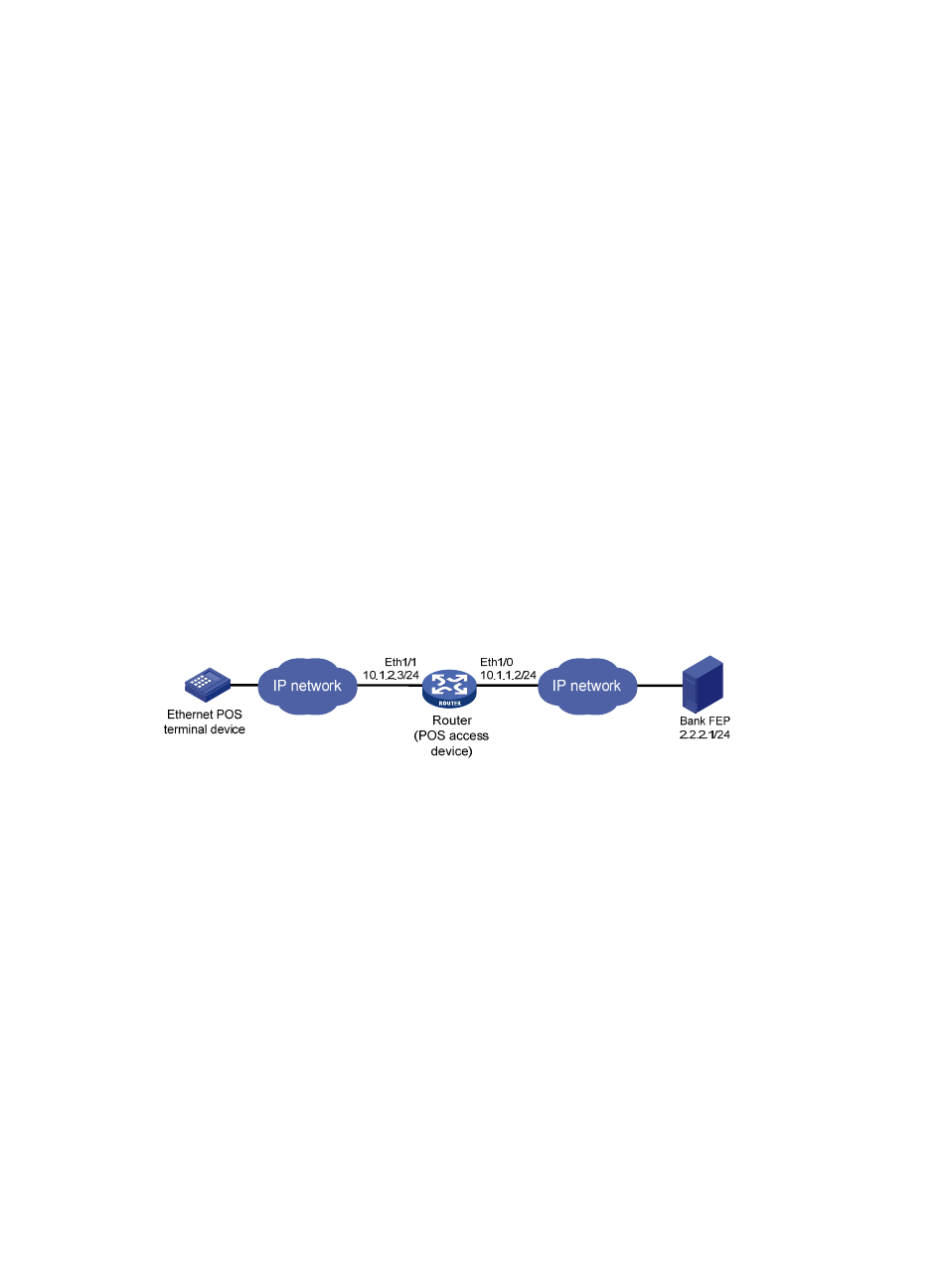Verifying the configuration, Network requirements, Configuration procedure – H3C Technologies H3C MSR 5600 User Manual
Page 23

16
[Sysname-Async2/1] quit
3.
Configure the POS terminal template: bind Async 2/0 to POS terminal template 1.
[Sysname] interface async 2/0
[Sysname–Async2/0] async-mode flow
[Sysname–Async2/0] posa bind terminal 1
[Sysname–Async2/0] quit
4.
Configure a POS application mapping entry to map packets destined for 01f1 to POS application
template 1.
[Sysname] posa map destination 01f1 app 1
Verifying the configuration
The POS terminal device sends a POS request packet. The router processes the packet and forwards it to
the bank FEP. The FEP receives the request packet and responds with a reply packet. The POS terminal
device receives the reply packet.
POS TCP terminal and TCP application configuration example
Network requirements
As shown in
, a POS terminal is connected to the POS access device through an Ethernet
interface. The POS access device is connected to the FEP through an Ethernet interface. The POS access
service has been enabled on the FEP. The listening port number is 2000.
Configure POS access on the POS access device so the POS terminal can access the FEP.
Figure 8 Network diagram
Configuration procedure
1.
Enable POS access service.
[Sysname] posa server enable
2.
Configure the POS application template:
# Configure application template 1 in TCP mode.
[Sysname] posa app 1 type tcp
# Specify the IP address and port number of the FEP as 2.2.2.1 and 2000.
[Sysname-posa-app1] ip 2.2.2.1 port 2000
[Sysname-posa-app1] quit
3.
Configure the POS terminal template 1: specify the TCP access mode and configure its listening
port number as 3000.
[Sysname] posa terminal 1 type tcp listen-port 3000
4.
Configure a default POS application mapping entry to map all packets to application template 1.
[Sysname] posa map default app 1
